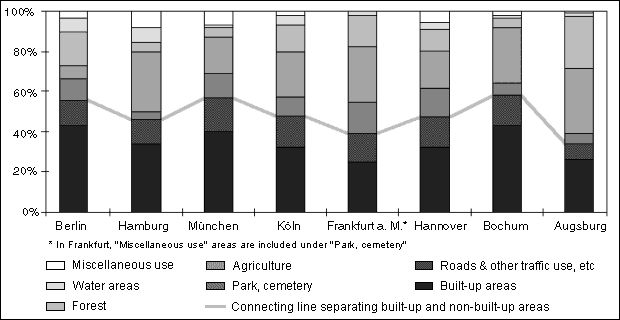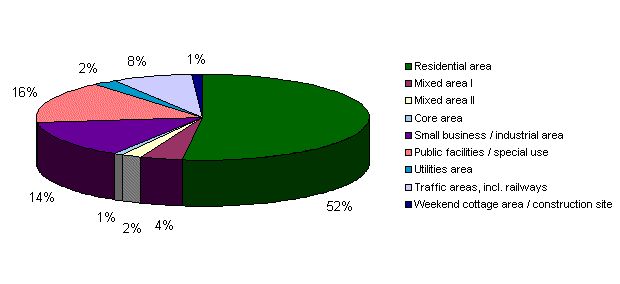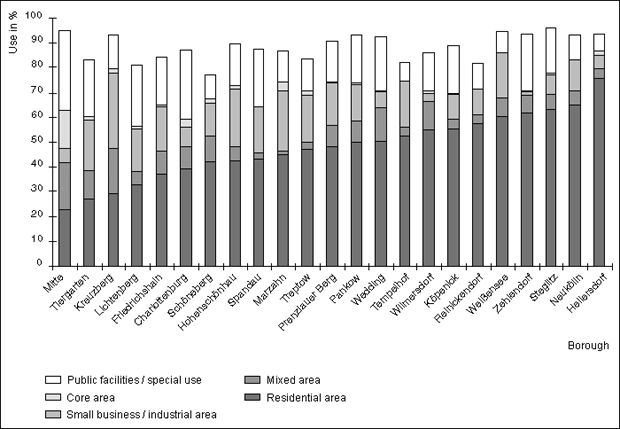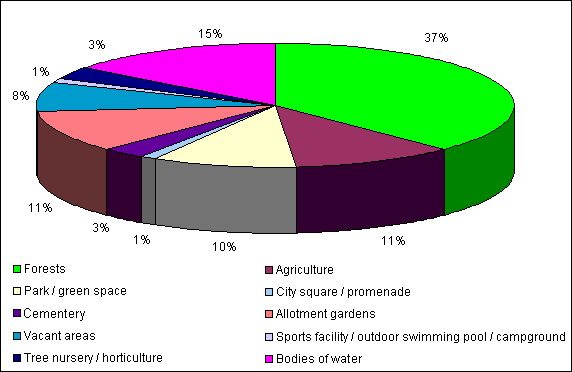Examples for the characteristic use distribution in the outskirts area are the boroughs of Tempelhof and Pankow, with 52 % and 50 % residential use and 18 % and 15 % industrial use, respectively, while in the borough of Mitte, with only 23 % Residential Areas, but 15 % Core Area use and a high share of Public Facilities (39 %), the central functions which have existed for centuries are reflected. This function is not shown so clearly for the West Berlin center around Kurfürstendamm / Tauentzienstrasse, which has a Core Area share of only 3 % or less, since the core area is distributed among the three boroughs of Charlottenburg, Tiergarten and Schöneberg. The inner city boroughs of Kreuzberg and Tiergarten have, with 30 %, a relatively low share of living space. In turn, the share of commercially-used area is very high, with 30 % and 20 %, respectively. Kreuzberg and Mitte are the boroughs with the largest Mixed Area shares (18 %). The originally available use mixture can still
be recognized most clearly in the boroughs of Prenzlauer Berg, Friedrichshain and Kreuzberg.
Zehlendorf (63 % residential use) and Hellersdorf (76 % residential use) stand out as neighborhoods with slight industrial use (2 and 5 %, respectively).
Map 06.02 ”Inventory of Green and Open Spaces”
Map 06.02 ”Inventory of Green and Open Spaces,” shows the different use categories in their shares of the non-built-up areas of Berlin, as well as their distribution throughout the city.
The largest part of the inventory of green and open spaces lies in the outskirts area. The large wooded areas of the Grunewald and the Düppel forests in the southwest, the Spandau and Tegel forests in the northwest and the large forest areas in the borough Köpenick in the southeast of Berlin stand out particularly. Forests account for 38 % of all Green and Open Spaces (cf. Fig. 4).




